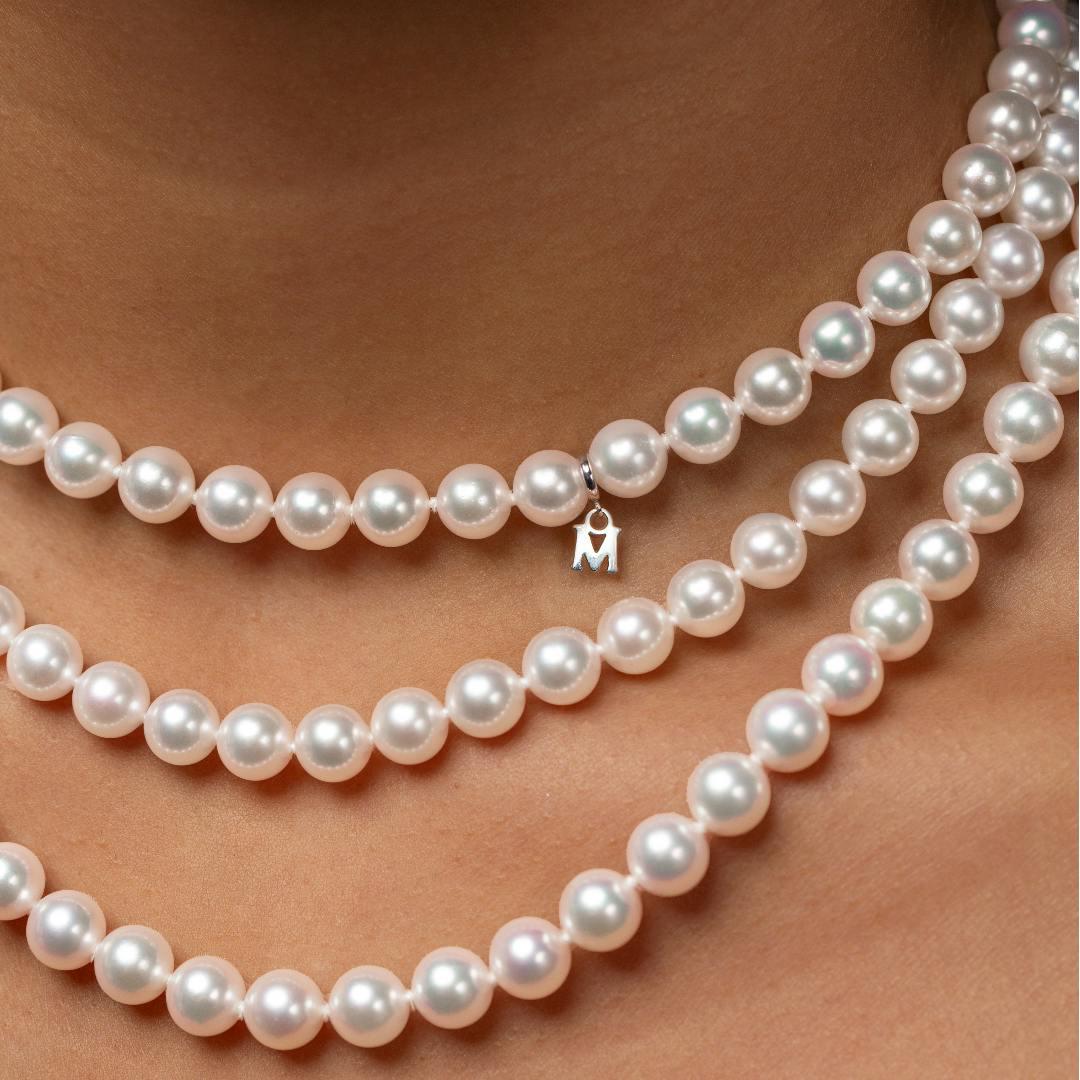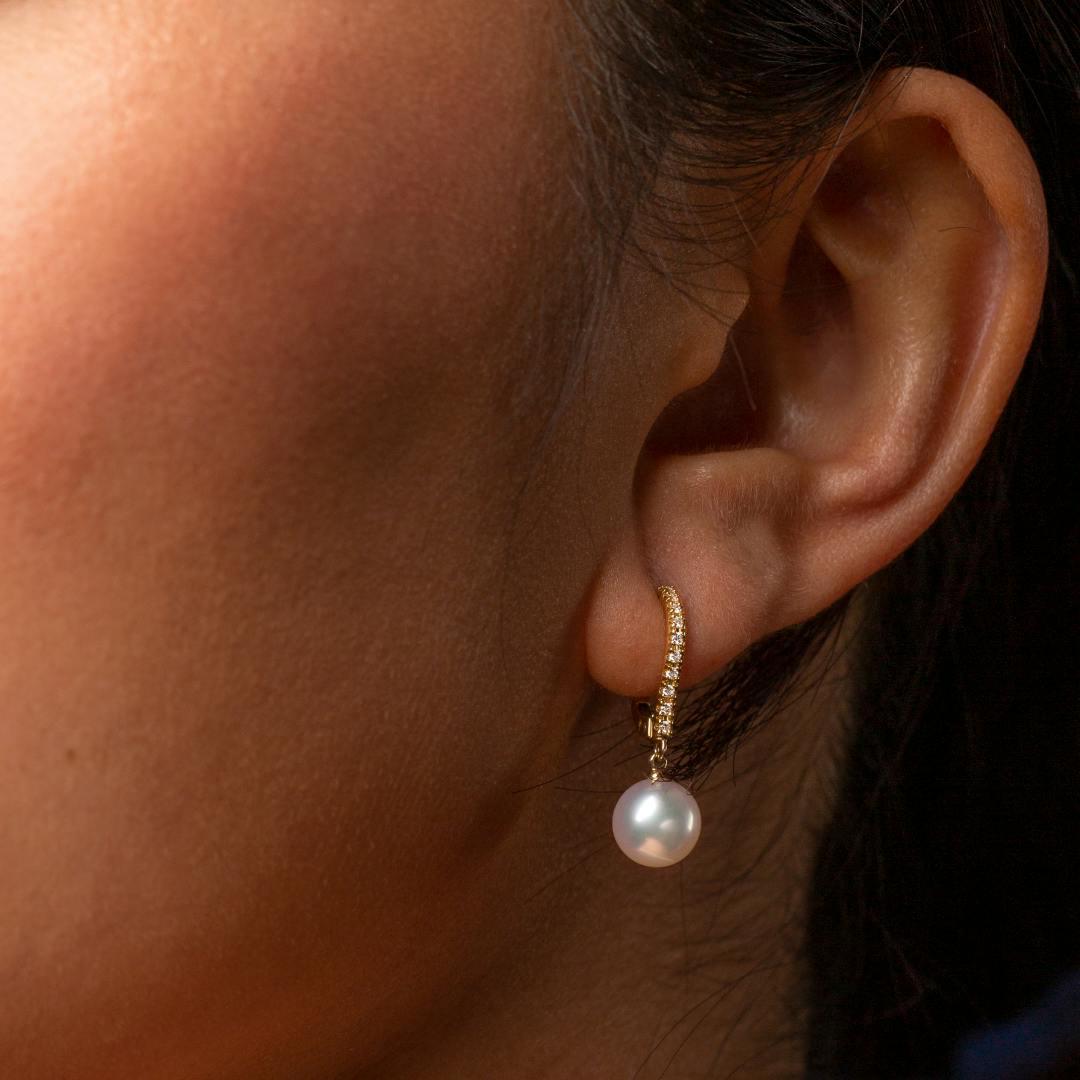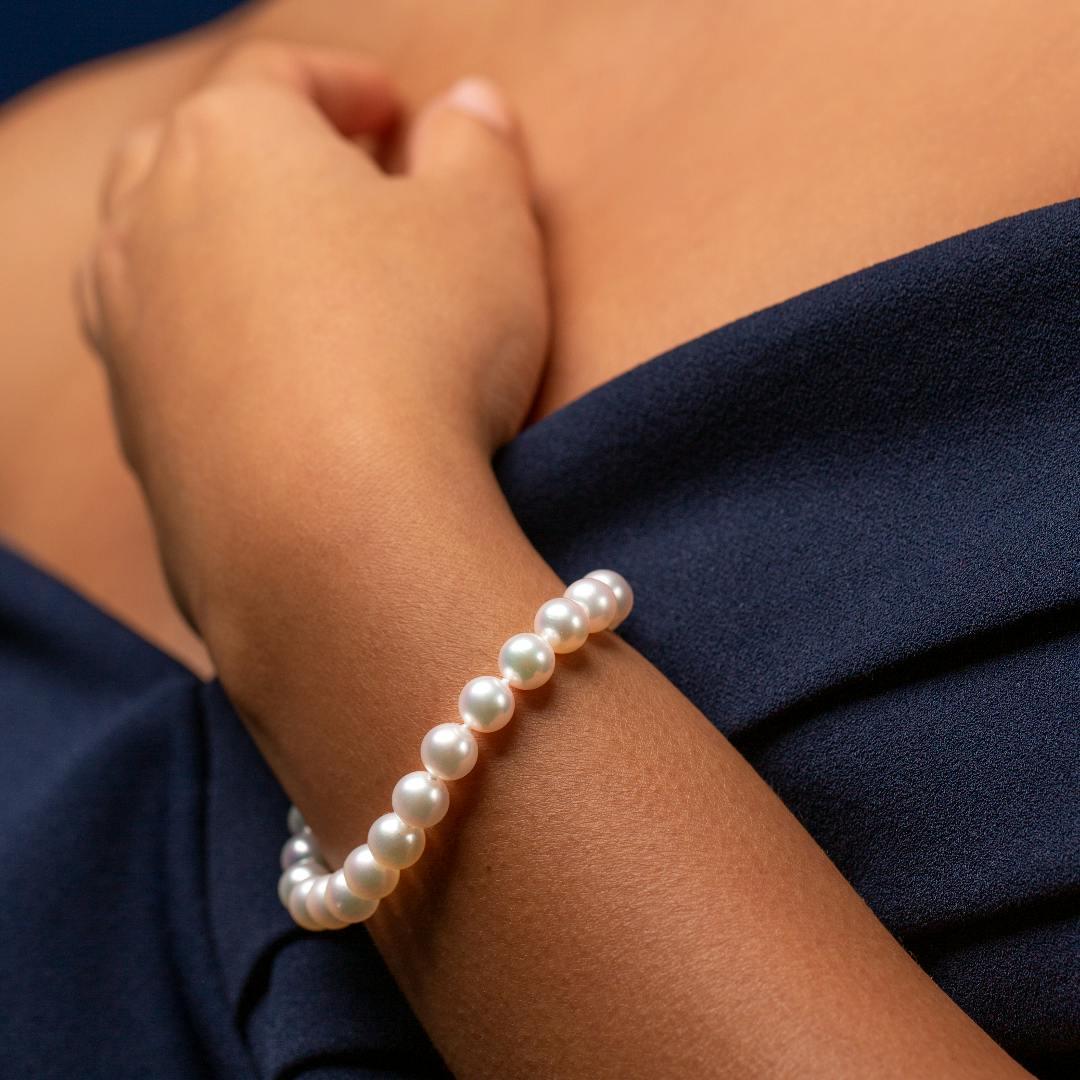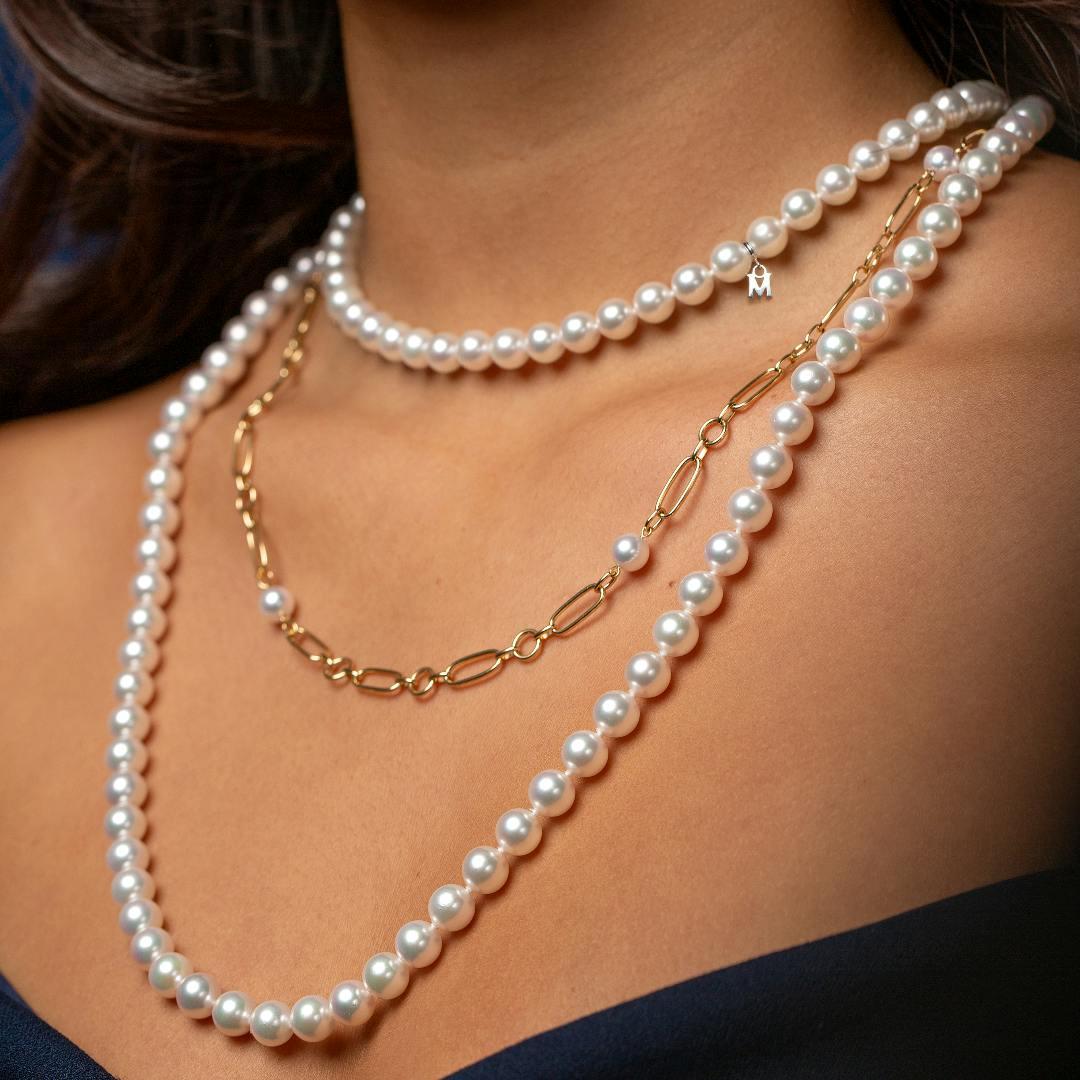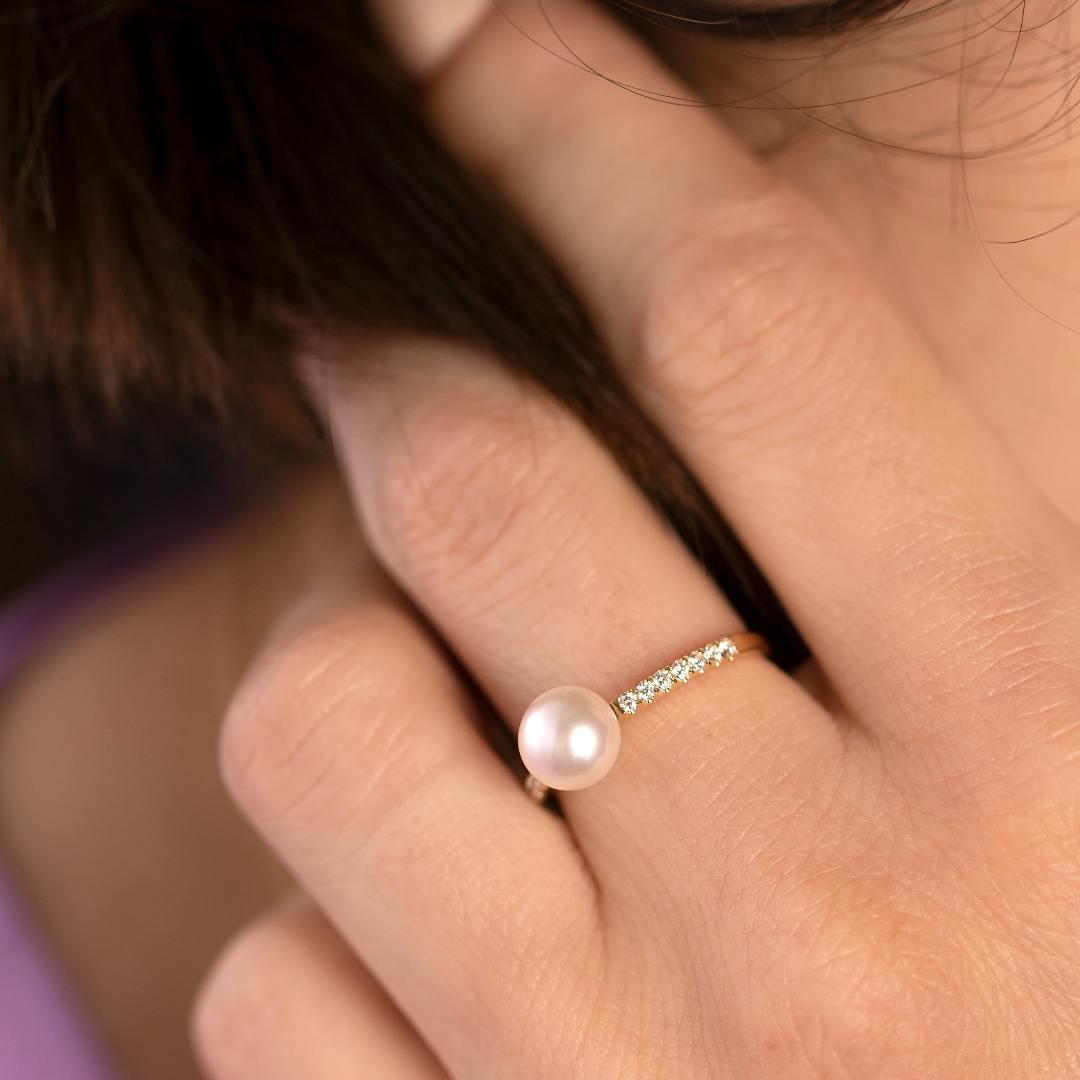Pearl Guide
A favorite jewel of the ages, from ancient royalty to modern-day baseball players, pearls exhibit color, shape and shine that set them apart in the world of gemstones. Their soft luster and silky feel evoke comfort and elegance, and today these gemstones maintain popularity in necklaces, rings, bracelets, earrings and more.
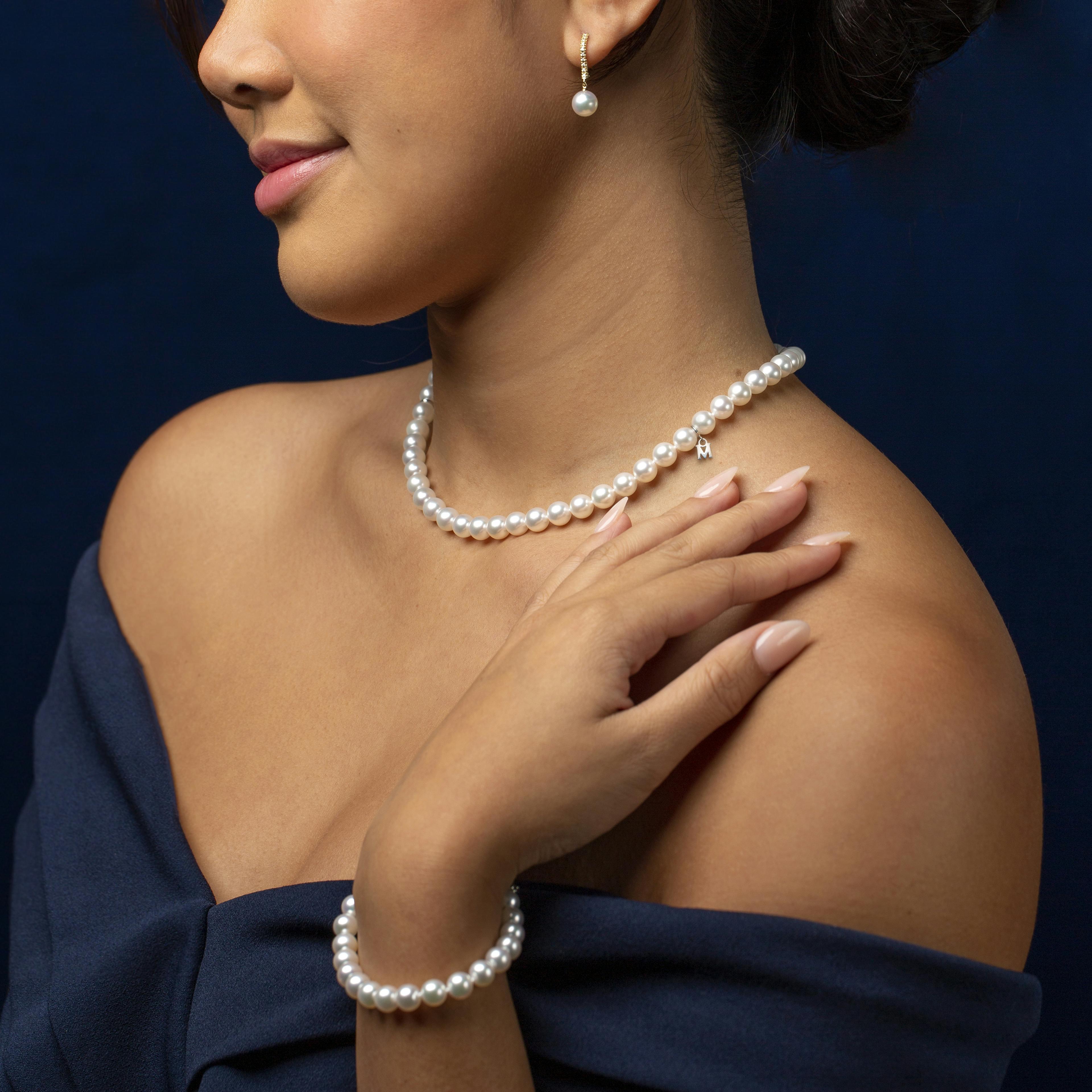

Pearl Nacre Quality and Thickness
Nacre, pearl layer, is the inner iridescent layer of molluscan shells, which is composed of alternating layers of aragonite platelet and organic materials film. Since nacre determines luster, nacre quality is a critical factor when determining a pearl's value. Generally speaking, the thicker the nacre, the more valuable the pearl. Thick nacre not only looks better than thin, it also is much more durable. Pearl types such as Tahitians and South Sea pearls have extremely thick nacre, often averaging between 2-4mm thick around the bead nucleus inside.
Pearl Luster
Luster is the glow that comes from within the pearl, which is produced by light entering the pearl and reflecting back at the viewer through the layers of nacre. The quality of the pearl's luster is directly related to how even and smooth the layers of nacre are. Generally, pearl lovers look for crisp and highly reflective luster that displays sharp, easily distinguished lines from reflected light sources.
Pearl Surface Quality
Surface quality measures how clean, smooth and free from blemishes a pearl appears. Most all pearl buyers will notice a degree of surface imperfections. The key factors to surface quality imperfections are how noticeable they are and if they seriously affect the durability of the pearl. Inclusions can be: abrasions, spots, bumps or wrinkles.
Pearl Size
Cultured pearls can range in size from tiny 1.0mm seed pearls up to 21.0mm and rarely, even larger. Like diamonds, size can contribute to exponentially increasing prices with each millimeter size up. This is because larger pearls are much harder to cultivate, take much longer to produce and thus are much rarer.
Pearl Shape
Perfectly round pearls are the “gold standard” when it comes to cultured pearl jewelry. These are the most conventional of all pearl shapes, and what almost every pearl shopper thinks of when they think of a classic pearl necklace. The most important consideration is that the pearl features evenly symmetrical shapes, which are most pleasing to the eye and more easily used in most pearl jewelry styles.
Pearl Color & Overtone
This Value Factor looks at the strength of the pearl’s body colors and overtones. The more easily visible and saturated, the better. Certain overtones are rarer and thus more valuable than others, and will increase the pearl’s price.
Pearl Matching
Matching measures how beautifully pearl necklaces, earrings, bracelets and sets are matched. Pearl matching should take into account: size, shape, surface quality, luster, body color and overtone. Multi-colored strands should be matched according to all these factors, but body color and overtones can be mixed. As long as the strand has a pretty overall tone and aesthetic, the mixed colors do not count negatively against the pearl’s overall grade.
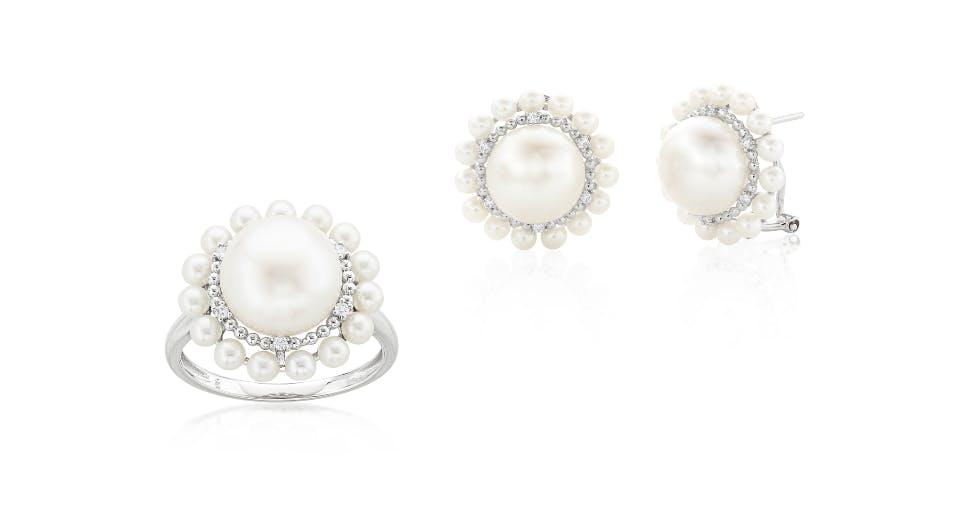

A | AA | AAA |
|---|---|---|
Low Quality Freshwater representing the bottom 60% of pearl harvest. | Medium-Grade Freshwater representing top 20% of harvest | High-Grade Freshwater representing the top 10% of a pearl harvest. Available in Finer Jewelry Stores. |
Heavy blemishing with only a 50% or less clean surface. | Minor to medium blemishing with a 70-80% clean surface. | Minor blemishing with at least 90% of the pearl surface clean. |
Poor Luster | Medium Luster | High Luster |
Off Round Shape | Off Round Shape | Near Round to Round Shape |
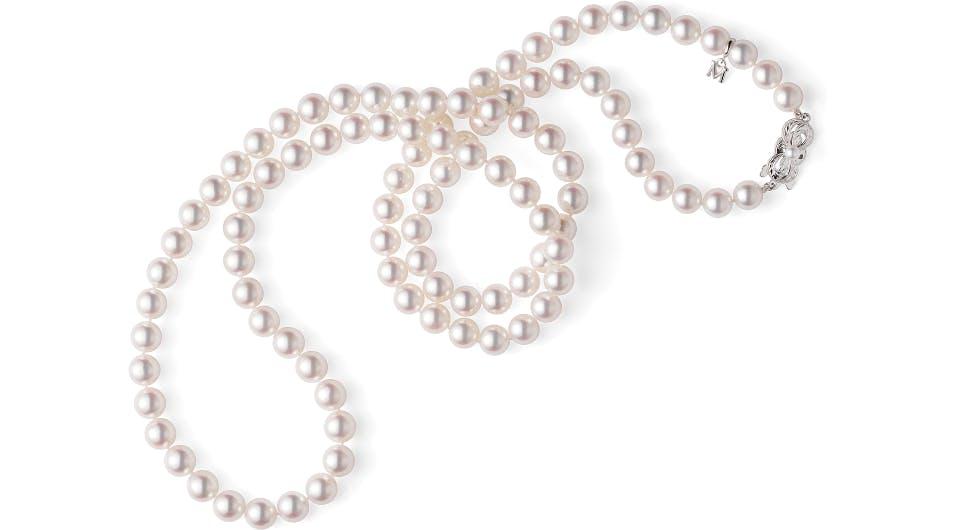

A | AA | AA+ |
|---|---|---|
Low Quality Japanese Akoya representing the bottom 50% of pearl harvest. | Medium-Grade Japanese Akoya representing top 60% of Harvest. | High-Grade Japanese Akoya representing the top 5-10% of a pearl harvest. |
Heavy blemishing with only a 50% or less clean surface. | Minor to medium blemishing with a 70-80% clean surface. | Minor blemishing with at least 90% of the pearl surface clean. |
Poor Luster | Medium Luster | High Luster |
Thin Nacre | Medium Nacre | Thich Nacre |
Round/Off Round Shape | Round Shape | Perfectly Round Shape |
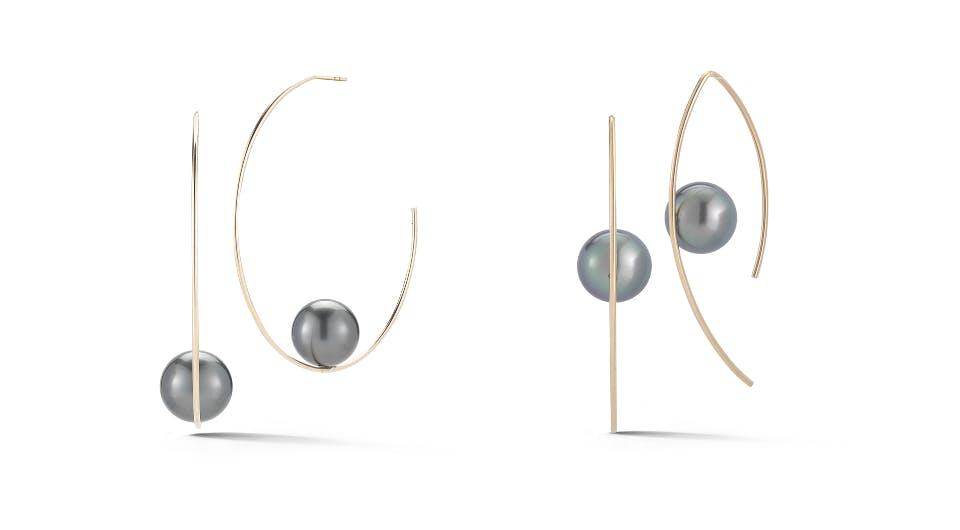

A | AA | AAA |
|---|---|---|
Low Quality Tahitian representing the bottom 50% of pearl harvest | Medium-Grade Tahitian representing top 60% of Harvest. | High-Grade Tahitian representing the top 5-10% of a pearl harvest. |
Pearls having flaws on at least 60% of the pearl surface, with 20% containing deep imperfections. | Flawless pearl on 40% of its surface, with the remaining 50% having minor imperfections and 10% containing deep flaws. | Flawless pearl on at least 80-85% of its surface, with remaining 15-20% containing only minor imperfections with one or two deep imperfections. |
Poor Luster | Medium Luster | High Luster |
"D" Quality | "C" Quality | "A/B" Quality |
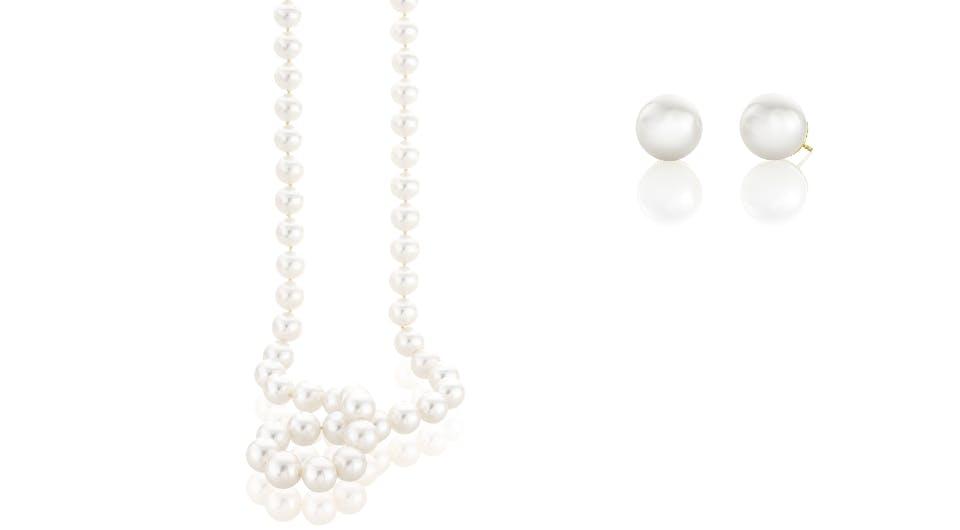

A | AA | AAA |
|---|---|---|
Low Quality South Sea representing the bottom 50% of pearl harvest | Medium-Grade South Sea representing top 60% of Harvest. | High-Grade South Sea representing the top 5-10% of a pearl harvest. |
Pearls having flaws on at least 60% of the pearl surface, with 20% containing deep imperfections. | Flawless pearl on 40% of its surface, with the remaining 50% having minor imperfections and 10% containg deep flaws. | Flawless pearl on at least 80-85% of its surface, with remaining 15-20% containing only minor imperfections with one or two deep imperfections. |
Poor Luster | Medium Luster | High Luster |
"D" Quality | "C" Quality | "A/B" Quality |
Lee Michaels has the best value and selection of Pearls in Louisiana, Texas, Mississippi and New Mexico.
Frequently asked questions about Pearls, their history, their value and more.
Available In Stores & Online
